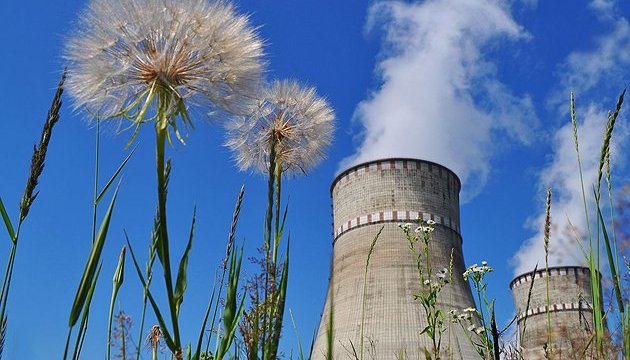УДК 577.41/:577.391 • Issue 2 (30) / 2019 • 70-83 pages
Shevchenko O., Dolin V. V.
Shevchenko O., D. Sc. (Geol.), Institute of Geology, Taras Shevchenko National University of Kyiv
Dolin V. V. D. Sc. (Geol.), SI “Institute of Environmental Geochemistry of National Academy of Sciences of Ukraine”
Abstract
The degree of migration activity of artificial radioactive substances in the environment is determined by the biogeochemical features of the landscape. The geochemical concept of monitoring of the environment, in particular, its component part – radiation monitoring is presented. The main object of the final radioecological assessment of the territory should be the catchment basin with its individual set of landscape features, which determine the differences in the aqueous removal of radionuclides from different basins in the same climate zone. In this case, the catchment area is the ideal object to overcome the problems of discrete estimates related to the uneven pollution. Twelve principles of radiation monitoring have been formulated, including the justification of the list of controlled (level I) and forecast indicators of II-III levels, the ultimate goal of which is to determine the barrier stability of the territories adjacent to radiation hazardous objects. Barrier resistance is the indicator that combines individual elements of the environment or landscape in the chains: soil – soil-forming rocks-underground waters; soil – water-bearing rocks – groundwater – surface waters; soil – surface water; air – soil – plants, etc. Chains with one major donor and one acceptor are simple, and systems that evaluate the complex barrier stability by the total barrier function of several components are complex.The main integrated indicators of the barrier resistance of the catchment and the protection of its water system must be the share and module of removal of the radionuclides from the catchment area and the nature of their changes in time.
Key words: radiation monitoring, factors, geochemical background, radionuclides water drainage, landscape, radiological indices, catchment basin, barrier resistance.
Article
Reference
- Prister, B.S., Kliuchnykov, A.A., Baryakhtar, V.G., Shestopalov, V.M., Kuhar, V.P. (2016), The safety problems of the nuclear power. The lessons of Chernobyl, Chernobyl, 356 p. (Russ.)
- 15 years of the Chernobyl disaster. Overcoming experience. National Report of Ukraine (2001), Кyiv, 148 p.
- Twenty years of the Chornobyl disaster. Opinion at the future. National accessibility of Ukraine (2006), Кyiv: Atika, pp. 22-23.
- Prister, B.S., Perepelytnikova, L.V., Omelyanenko, N.P. (1993), Reports of the Academy of Sciences of Ukraine, 1, рр.163–170.
- Кlenus, V.G., et al. (1996), Chernobyl-94, (Zelenyi Mys, 1994), Chernobyl, 1, pp. 165–179. (Russ.)
- Bondarenko, G.N., Klimenko, L.V. (1998), Problemy Chornobyls’koyi zony vidchudgennya, 5, pp.18-24.
- Kashparov, V.O. (2001), Chornobyl. Zona vidchydgennya, К.: Naukova dumka, pp. 11-46. (Ukr.)
- Ivanov, Yu.O. (2001), Chornobyl. Zona vidchydgennya, К.: Naukova dumka, pp. 47–76. (Ukr)
- Dolin, V.V., Bondarenko, G.N., Orlov O.O. (2004), Samoochyschennya pryrodnogo seredovyzcha pislya Chornobyls’koyi catastrofy. К.: Naukova dumka, 221 p. (Ukr)
- Barbashov, S.V., Vit’ko, V.I., Kovalenko, G.D. (2011), Radiation monitoring in Ukraine: state, problems and solutions, Odesa: Astroprint, 76 p.
- Barbashov, S.V. Prister, B.S. (2013), Nuclear and radiation safety, 1, pp. 41-47.
- Zhukova, O,M. (2001), Geological Bulletin of the Central Regions of Russia, 2(15), pp. 74-79. (Russ.)
- Shevchenko, O.L. (2016), Avtoreferat diss. Radiohydrogeology of the drained landscapes of the Ukrainian Polesie (on the example of the Chernobyl Exclusion Zone), Kyiv, 44 p.
- Shevchenko, O.L., Dolin, V.V., Nasedkin, I.Yu., Kireev, S.I., Kozitskii, O.N. (2002), Water Resources. 29, 4. pp. 449-464.
- Shevchenko, O.L. et. al., (2011), Patterns of relationship of migration of mancaused radionuclides on the reclamation systems of the Chernobyl Exclusion Zone (according to the results of the research of 1986-2004), Kcherson, Oldi-plus, 415 p.
- Sobotovich, E.V. Dolin, V.V. (2002), Radioactivity in nuclear explosions and accidents: Abstracts dokl. int. conf. in Mosckow, St.Peterburg, Ru, p.409.
- Shevchenko, O.L. Kireev, S.I., (2005), Ecology and resources, 11, p.77-86.
- Alferov, I.N. (2005), Avtoreferat diss. Methods of protecting the geological environment of mining areas based on the implementation of environmental capacity, Perm, Ru, 21 p
- Shevchenko, O.L. (2016), Dopovidi of the Academy of Sciences of Ukraine, 4, pp.69-77.
- Shevchenko, O.L. (2016), Scientific works of the Ukrainian Hydrometeorological Research Institute, 268, pp. 82-92.
- Shestopalov, V.M., Korzhnev, M.M., Vyzhva, S.A. et. al., (2011), Ecogeology of Ukraine, Kyiv: Кyivs’kyi universytet, pp. 116-217.
- Shestopalov, V. (2007), Assessment of protection and vulnerability of groundwater, taking into account zones of rapid migration, Кyiv, 120 p. (Russ)
- Aller, L., Bennet, T., Lehr, J.H., Petty, R.J. and Hackett, G. (1987), DRASTIC: A standardized system for evaluating ground water pollution potential using hydrogeologic settings. US Environmental Protection Agency, Ada, EPA/600/2-87-036.
- Vrba, J. Zaporozec, A. (1994), Guidebook on Mapping Groundwater Vulnerability. International Contributions to Hydrogeology, 16.
